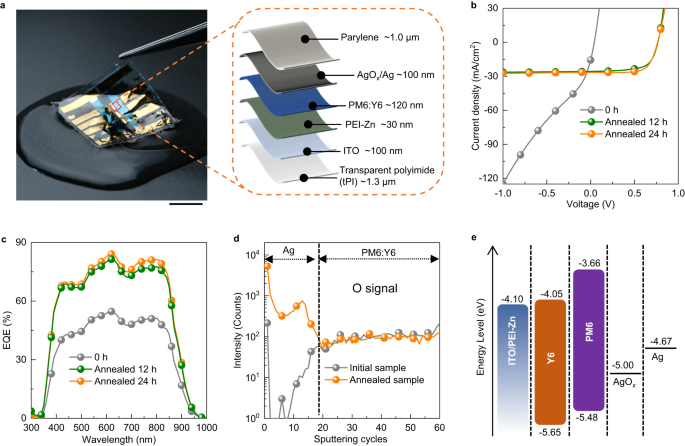RIKEN Research March 27, 2024
Waterproofing ultra flexible organic photovoltaics without compromising mechanical flexibility and conformability remains challenging. An international team of researchers (Japan, USA – Georgia Institute of Technology) demonstrated waterproof and ultra flexible organic photovoltaics through the in-situ growth of a hole-transporting layer to strengthen interface adhesion between the active layer and anode by depositing silver electrode directly on top of the active layers, followed by thermal annealing treatment. The in-situ grown hole-transporting layer exhibited higher thermodynamic adhesion between the active layers, resulting in better waterproof. The 3 μm-thick organic photovoltaics retained 89% and 96% of their pristine performance after immersion in water for 4 h and 300 stretching/releasing cycles at 30% strain under water, respectively. The ultra flexible devices withstood a machine-washing test. They also demonstrated the universality of the strategy for achieving waterproof solar cells… read more. Open Access TECHNICAL ARTICLE

Structure, characteristics, and mechanism analysis of waterproof OPVs. Credit: Nature Communications volume 15, Article number: 681 (2024)